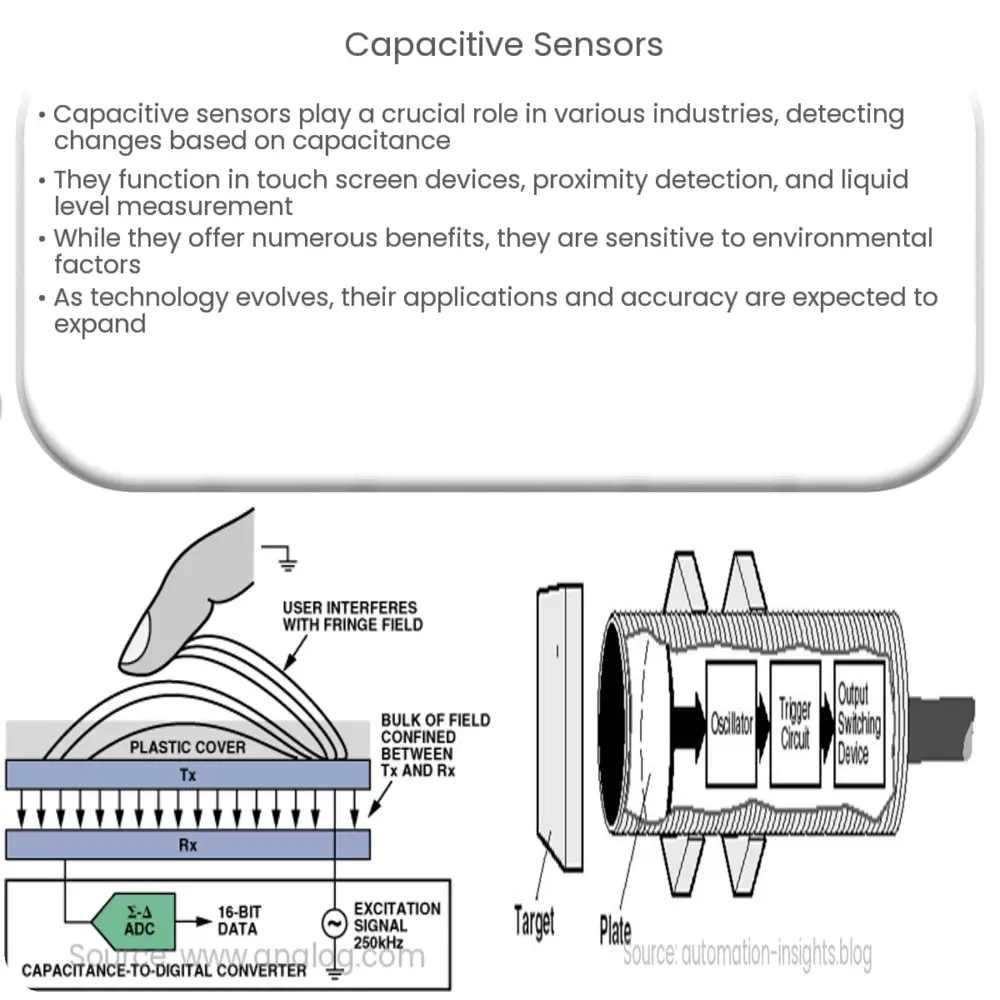Explore the world of capacitive sensors, their operation, types, applications, advantages, and future potential in our comprehensive guide.

Introduction to Capacitive Sensors
Capacitive sensors are critical devices that have a wide range of applications in numerous industries. From touch screen devices to position detectors, capacitive sensors continue to revolutionize the world of technology.
Understanding Capacitive Sensors
Capacitive sensors work on the fundamental principle of capacitance, a property of electronic components where electrical energy is stored in an ‘electric field.’ By monitoring changes in the electrical capacitance of a sensor, it’s possible to discern specific physical changes in the sensor’s environment. Capacitive sensing technology can detect and measure anything that is conductive or has a dielectric different from air.
Types of Capacitive Sensors
How Capacitive Sensors Work
The basic operation of a capacitive sensor involves an oscillating circuit and a detector circuit. The sensor itself forms a part of a simple oscillator circuit whose frequency is affected by the capacitance of the sensor. When an object comes into proximity with the sensor, it alters the sensor’s capacitance, which in turn changes the frequency of the oscillator. This change is detected and processed by the detector circuit.
While capacitive sensors may seem simple, their importance cannot be understated. They provide the basis for a variety of technological innovations that we rely on daily. From the simple action of unlocking your smartphone with a touch, to ensuring safety in industrial environments with proximity sensors, capacitive sensors play a pivotal role.
Advantages of Capacitive Sensors
Capacitive sensors offer numerous advantages in various applications. Due to their non-contact nature, they provide a longer operational life as there is no wear and tear due to physical contact. These sensors also exhibit high sensitivity, allowing them to detect objects through different kinds of materials. For instance, a capacitive sensor can detect a human hand even when it is behind a non-conductive material like glass or plastic.
Applications of Capacitive Sensors
Challenges and Limitations
Despite their numerous advantages, capacitive sensors are not without their challenges. These sensors are often sensitive to changes in temperature and humidity, which can affect the accuracy of readings. Additionally, capacitive sensors can sometimes exhibit false triggers when detecting conductive objects through non-conductive materials.
Future of Capacitive Sensors
The future of capacitive sensors looks promising. With continuous advancements in technology, these sensors are expected to become even more accurate, reliable, and versatile. Innovations in nanotechnology and materials science may lead to the development of capacitive sensors that are more resilient to environmental changes, thereby overcoming some of the current limitations.
Conclusion
In conclusion, capacitive sensors are a significant part of the modern technology landscape. Despite some challenges, their wide range of applications, from consumer electronics to industrial automation and healthcare, attests to their importance. As technology advances, capacitive sensors will likely continue to evolve, offering new possibilities and solutions for a multitude of sectors.

